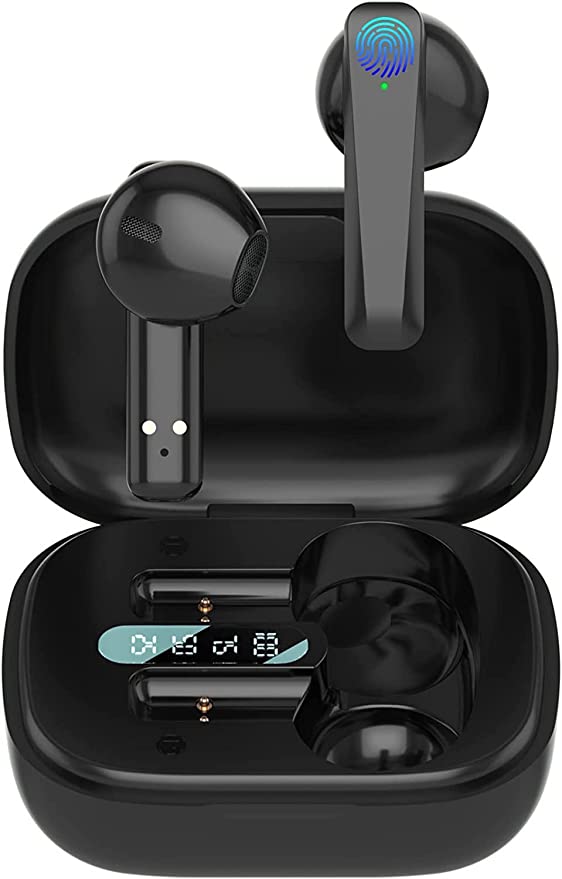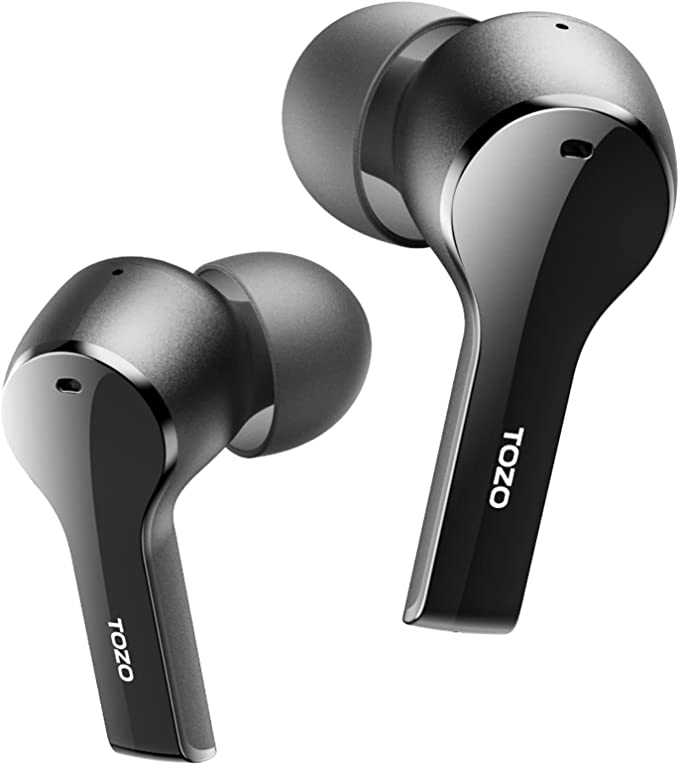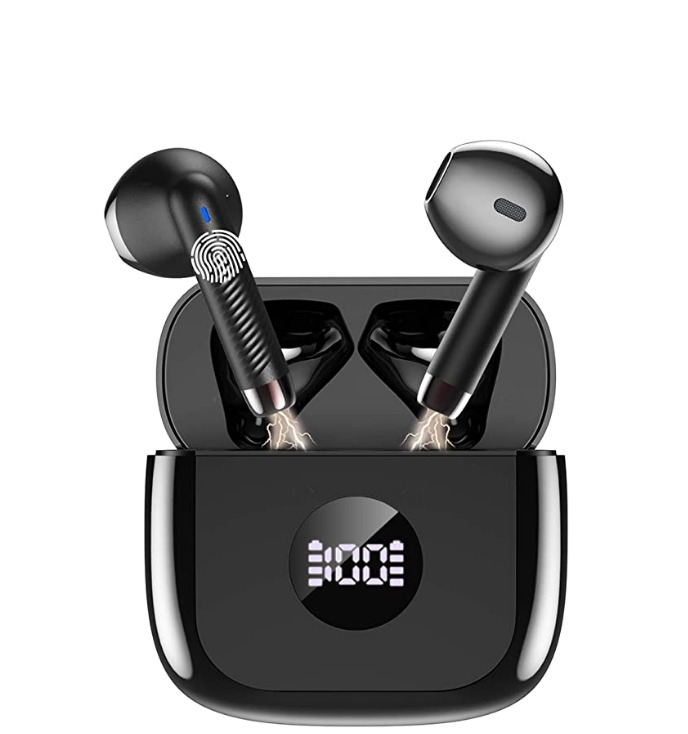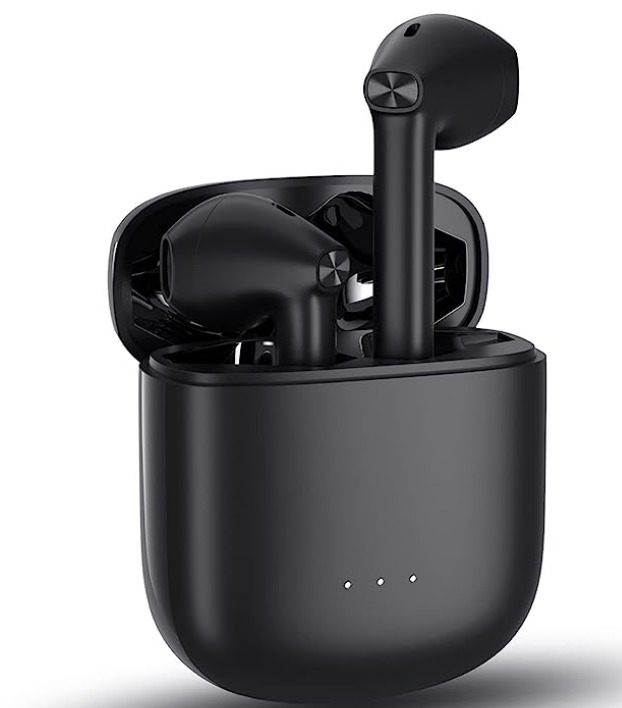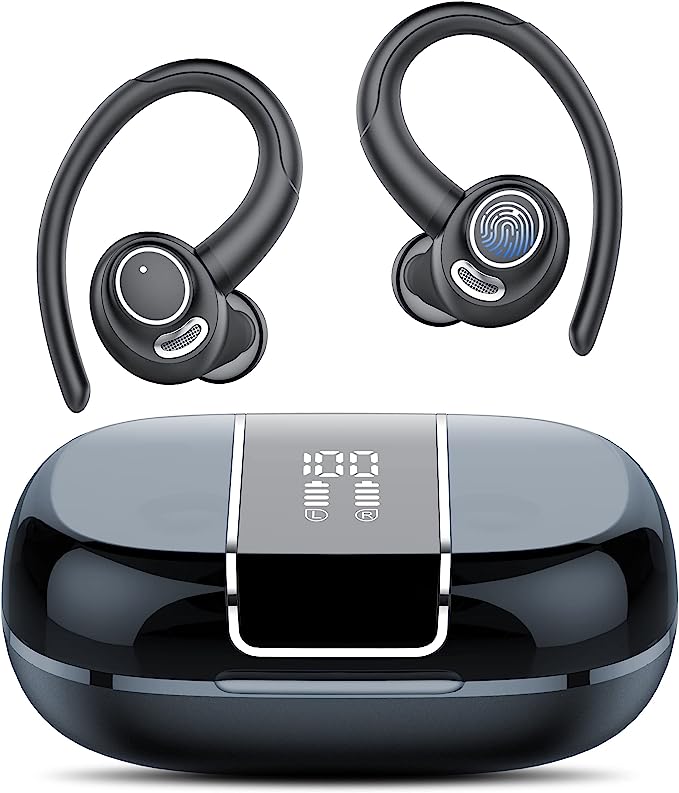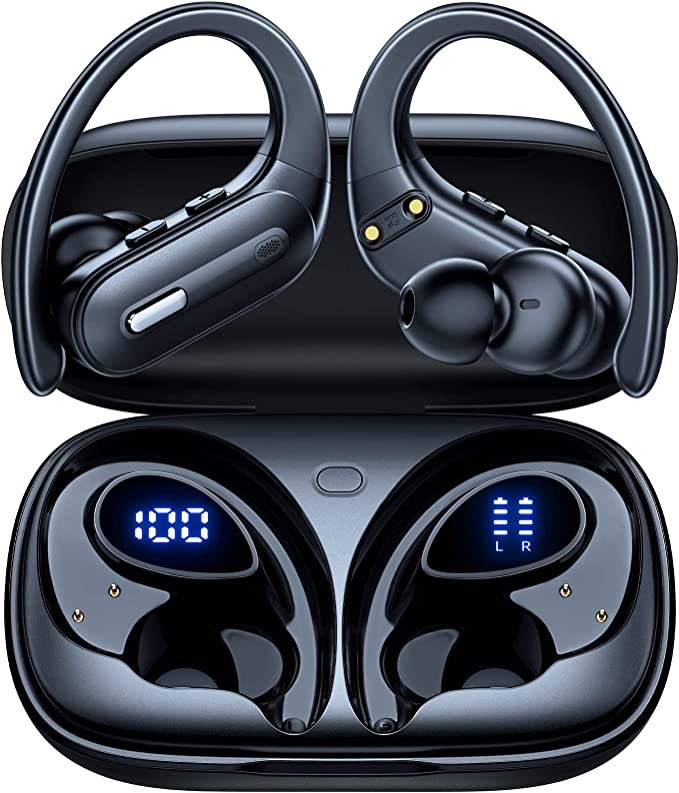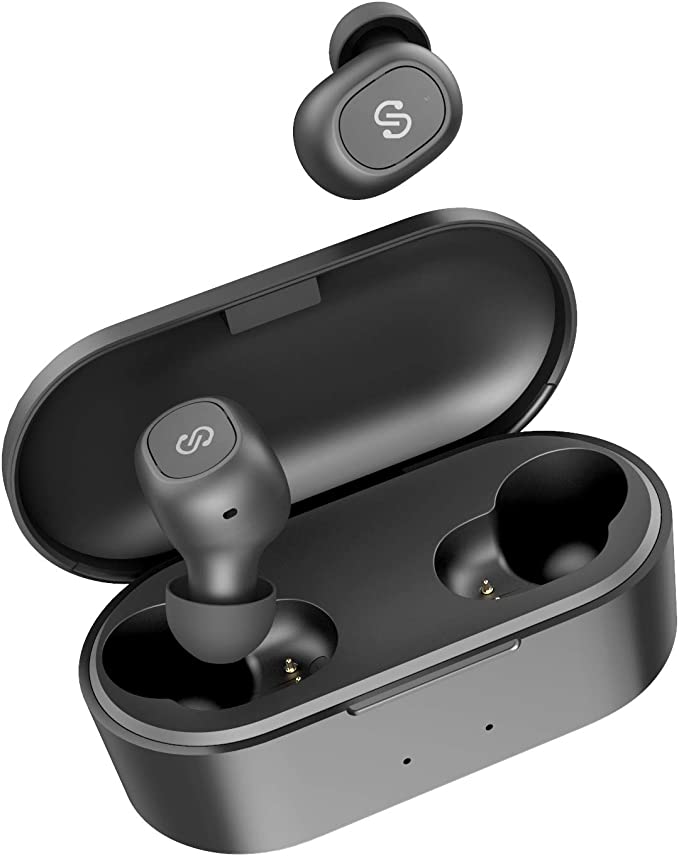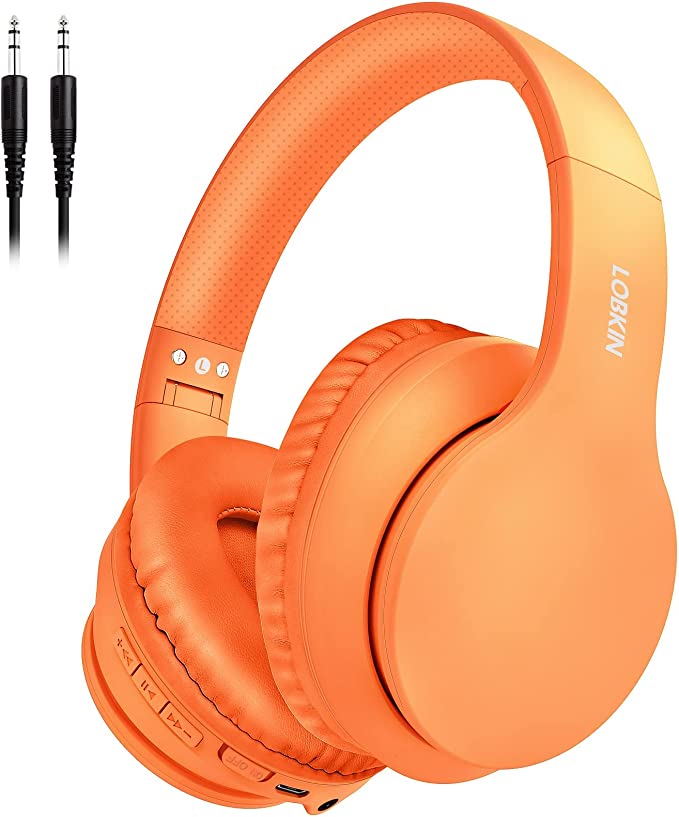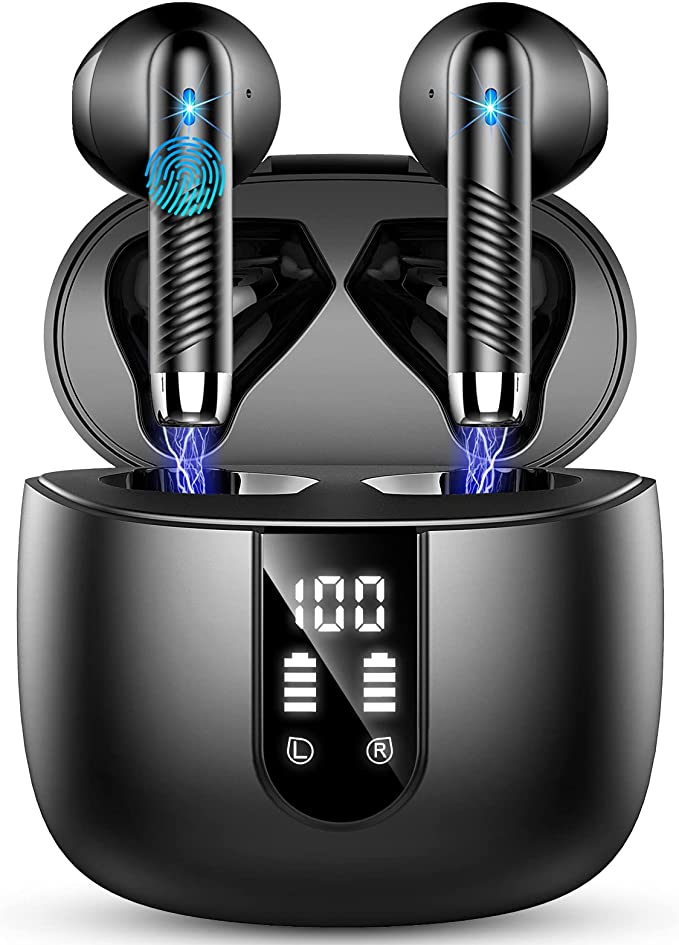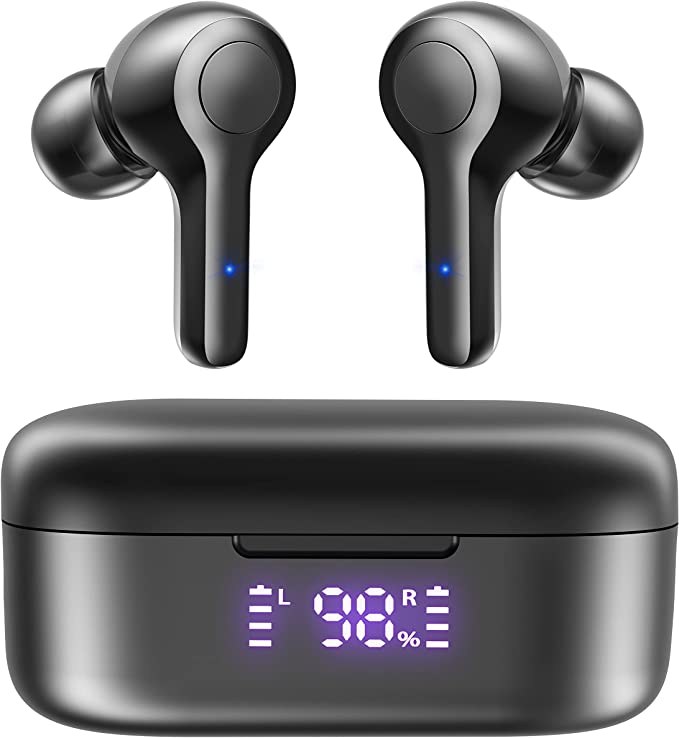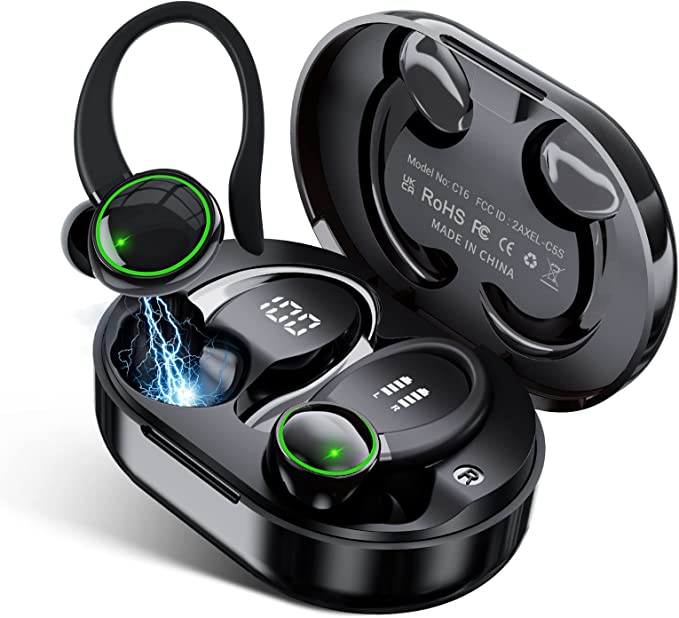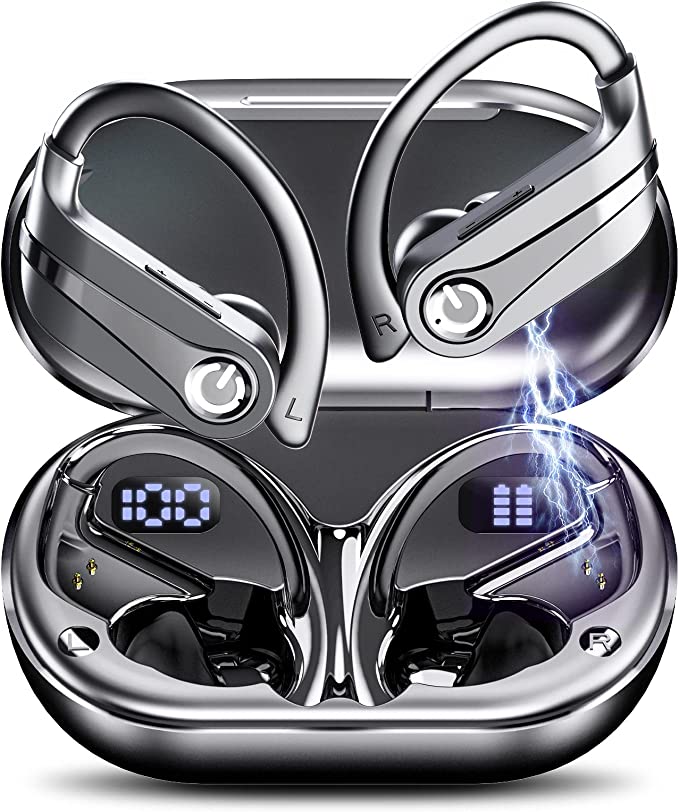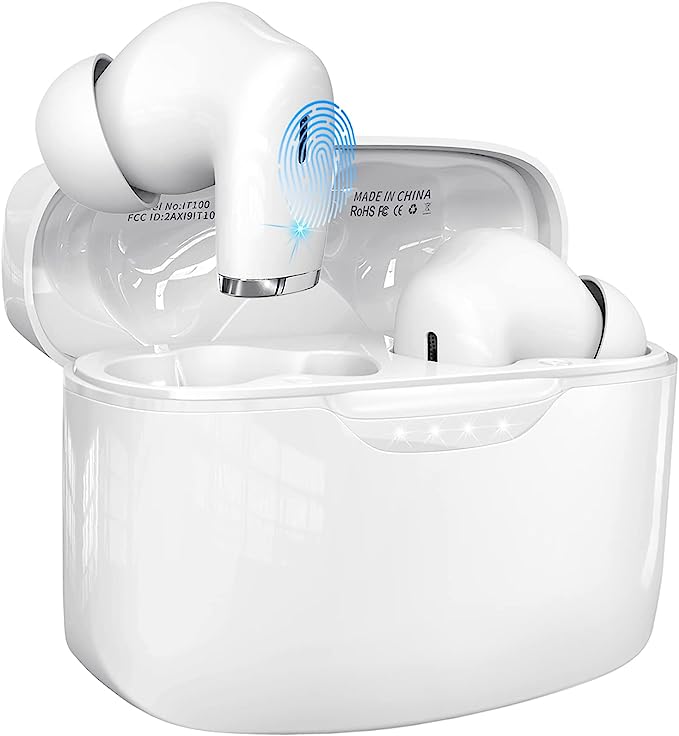CALCINI Punch3 Wireless Earbuds: True Wireless Earphones for Sport and Work
Update on May 30, 2025, 1:15 p.m.
In an era where our lives are increasingly untethered, the quest for the perfect pocketable sound has led many of us to the marvel of True Wireless Stereo (TWS) earbuds. These diminutive powerhouses promise freedom from tangled cables, seamless connectivity, and an immersive audio experience, all while fitting snugly in our ears. But have you ever paused to consider the intricate dance of technology and science packed into these tiny shells? Today, we’re taking a closer look at the CALCINI Punch3 True Wireless Earbuds, not just as a product, but as a fascinating window into the engineering that shapes our daily soundscapes. Let’s embark on a journey to decode the science that makes these earbuds tick.

The Unseen Symphony: Decoding Bluetooth 5.3 for Flawless Harmony
At the very core of any true wireless experience lies the invisible handshake of Bluetooth technology. The CALCINI Punch3 earbuds come equipped with Bluetooth 5.3, a noteworthy iteration in this ubiquitous wireless standard. You might see “Bluetooth 5.3” listed as a feature and nod along, but what does it genuinely mean for your listening pleasure?
Think of Bluetooth as a dedicated, short-range radio messenger, constantly flitting between your phone (or other source device) and your earbuds, carrying precious audio data. Each new version, meticulously developed by the Bluetooth Special Interest Group (SIG)—a global community of companies that collaborate to advance the technology—aims to make this messenger faster, more reliable, and more efficient. Bluetooth 5.3 builds significantly on its predecessors. One of its primary enhancements lies in connection stability and efficiency. It introduces features that allow devices to be smarter about when and how they transmit data, reducing interference, especially in today’s increasingly crowded radio frequency environments (think busy cafes or public transport). This translates to fewer frustrating dropouts or stutters in your music or calls. Imagine trying to enjoy a podcast while navigating a bustling city street; Bluetooth 5.3 strives to keep that audio stream smooth and uninterrupted.
Furthermore, Bluetooth 5.3 is engineered for improved power efficiency. For compact, battery-reliant devices like the Punch3 earbuds, this is paramount. By optimizing data transmission and allowing for longer sleep intervals when inactive, it helps squeeze more playback time out of those small internal batteries. While the Bluetooth 5.3 standard also paves the way for advanced features like LE Audio and the highly efficient LC3 codec (which promise even better sound quality at lower data rates in the future), the immediate benefit you’ll appreciate with the Punch3 is a more robust and less power-hungry connection to your Samsung, Android, iPhone, MacBook, or laptop. It’s the unsung hero ensuring your audio journey is both seamless and sustained.

Crafting Clarity: The Science of the Composite Membrane Speaker
Once the audio data arrives at the earbuds, the magic of transforming electrical signals into audible sound waves begins. This crucial task falls to the speaker drivers. The CALCINI Punch3 features what’s described as a composite membrane speaker. This isn’t just a fancy term; it points to a specific approach in acoustic engineering aimed at delivering a richer, more detailed sound.
Let’s break it down. The “membrane,” or diaphragm, is the part of the speaker that vibrates to create sound. Think of it like the surface of a drum. The material and construction of this diaphragm profoundly influence the sound characteristics. A “composite” membrane means it’s constructed from a combination of different materials, each selected for its unique acoustic properties. Why do this? Because different materials excel at reproducing different parts of the sound spectrum. For instance, a lighter, stiffer material might be excellent for crisp high frequencies (the tinkle of cymbals, the clarity of a soprano voice), while a more compliant material might be better for generating deep, resonant bass notes.
The goal of a composite diaphragm, like the one in the Punch3, is to achieve a harmonious balance, leveraging the strengths of multiple materials to cover a wider frequency range with greater accuracy. CALCINI states these earbuds deliver sound that is “more three-dimensional and clear, the bass is deeper, the treble is crisp and less distorted.” This is precisely what engineers aim for with such designs: the ability to render complex musical passages with fidelity, allowing you to discern individual instruments and enjoy a more immersive, well-rounded sound. It’s an attempt to recreate the original recording with as much nuance as possible, moving beyond a flat or muddy presentation to one that has depth, clarity, and impact. The science here is a blend of material science and acoustics, all working to make your music truly sing.

Beyond the Call: Microphone Technology and the Quest for Clear Conversations
In today’s connected world, earbuds are not just for music; they are vital communication tools. The CALCINI Punch3 earbuds incorporate built-in microphones in each Bluetooth headset, and the product description highlights call noise cancellation. Understanding how this works, even at a basic level, can enhance your appreciation for this feature.
At its core, a microphone converts sound waves (your voice, and unfortunately, any surrounding noise) into electrical signals. For clear calls, two things are essential: accurately capturing your voice and minimizing the intrusion of unwanted background sounds. While the specifics of the Punch3’s noise cancellation aren’t detailed (e.g., whether it’s a single-mic or multi-mic Environmental Noise Cancellation - ENC system), the general principle of most call noise cancellation technologies involves sophisticated Digital Signal Processing (DSP).
Imagine you’re on a call in a windy park. The microphone picks up your voice, but also the rustling leaves and distant traffic. DSP algorithms are designed to analyze this mixed audio signal. They attempt to distinguish the characteristic patterns of human speech from the more random or sustained patterns of noise. Once identified, the algorithm works to suppress or reduce the level of that background noise, thereby making your voice sound clearer and more prominent to the person you’re speaking with. It’s like having a tiny, intelligent audio engineer inside your earbuds, constantly working to clean up the sound. This technology ensures your conversations can flow more smoothly, even when you’re not in the quietest of environments, making the Punch3 a more versatile companion for both work and leisure.
The Powerhouse in Your Pocket: Unpacking Battery Endurance and the Charging Case
No matter how fantastic the sound or how stable the connection, a pair of true wireless earbuds is only as good as its battery life. The CALCINI Punch3 offers some compelling numbers here: the earbuds themselves are rated for up to 8 hours of playtime on a single charge (at a moderate 50%-60% volume), and the accompanying charging case, boasting a 400mAh battery capacity, can provide 3 full charges for both earbuds. This pushes the total usage time beyond an impressive 32 hours.
Let’s put these numbers into a real-world context. Eight hours of continuous playback is enough to cover a long international flight, a full workday with music accompaniment, or several intense gym sessions. The 400mAh (milliampere-hour) rating of the charging case is a measure of its electrical charge storage capacity. Think of it as a portable power bank specifically designed for your earbuds. Each time you pop the earbuds back into the case, they begin to recharge, drawing power from this reserve. The case itself is then recharged via a modern USB-C cable, which is a welcome standard for its reversible connector and generally faster charging capabilities compared to older micro-USB ports.
A particularly user-centric feature of the Punch3 is the LED digital battery indicator on the outside of the charging case. This small display provides real-time information on the remaining power of the charging box and the charging status of the earbuds. This seemingly simple addition eliminates the guesswork often associated with TWS earbuds. No more wondering if you have enough juice for your commute; a quick glance tells you all you need to know. The science of lithium-ion batteries, which are universally used in such devices for their high energy density and rechargeability, combined with efficient power management in both the earbuds and the case, makes this extended listening freedom possible.

Engineered for Life’s Rhythm: The Significance of IPX5 Waterproofing and Ergonomic Design
Our gadgets need to keep pace with our lives, whether that involves a sweaty workout, an unexpected downpour during a run, or simply hours of comfortable listening. The CALCINI Punch3 addresses these needs through its IPX5 waterproof rating and ergonomic design.
The “IP” in IPX5 stands for Ingress Protection, and it’s a standardized rating system (defined by the International Electrotechnical Commission’s standard IEC 60529) that classifies the degree of protection provided by an enclosure against the intrusion of foreign objects (like dust) and water. The “X” in IPX5 means it hasn’t been specifically rated for dust ingress (or the manufacturer chose not to test for it), while the “5” indicates its level of water protection. An IPX5 rating signifies that the earbuds are protected against low-pressure water jets from any direction. In practical terms, this means they can comfortably handle sweat during vigorous exercise and resist light rain. So, you can push through that extra mile or dance in a drizzle without fearing for their survival. The product description also mentions the use of ABS (Acrylonitrile Butadiene Styrene) material, a robust thermoplastic known for its toughness and impact resistance, which contributes to the overall durability of the earbud housing.
However, durability is only part of the equation; comfort is equally crucial, especially for in-ear devices. The “ergonomic wireless earphones” claim is supported by the inclusion of 2 pairs of soft silicone caps (the product description later clarifies S, M, and L sizes are available, implying a total of three sizes). Finding the right fit is essential. A snug, secure fit not only prevents the earbuds from dislodging during activity but also significantly impacts sound quality by creating a better seal within the ear canal. This seal improves passive noise isolation (blocking out some external sounds) and enhances bass response. The science of ergonomics, which studies how to design products for optimal human use and comfort, guides the shaping of the earbuds to conform to the natural contours of the ear, minimizing pressure points and allowing for extended wear without pain. The Punch3 aims to be a companion that you can almost forget you’re wearing.

Effortless Command: The Intuition of Touch Controls and TWS Flexibility
In the pursuit of a sleek and minimalist design, many modern TWS earbuds, including the CALCINI Punch3, have adopted touch controls. Instead of fiddly physical buttons, these earbuds feature touch-sensitive surfaces that respond to your taps and presses. This isn’t just an aesthetic choice; it’s about creating a more intuitive and seamless user experience.
The Punch3 allows you to manage a host of functions directly from the earbuds: * Play or Pause music: A double-tap on either the left (L) or right (R) earbud. * Navigate tracks: A long press (2 seconds) on the L earbud for the previous track, or on the R earbud for the next. * Adjust volume: A triple-tap on the L earbud for volume down, or on the R earbud for volume up. * Manage calls: Double-tap either earbud to answer or end a call, and a long press to reject an incoming call.
This level of control means your phone can stay safely tucked away in your pocket or bag much of the time. The underlying technology for these touch controls is often capacitive sensing. Your fingertip, being electrically conductive, alters the local electrostatic field of a sensor embedded beneath the earbud’s surface. This change is detected, registered as a touch, and then interpreted by the earbud’s firmware to trigger the corresponding command. It’s a subtle yet sophisticated interaction.
Furthermore, the “TWS” in True Wireless Stereo means that not only do the two earbuds work together to create a stereo sound field, but they can also work independently. You can use just the left or right earbud on its own, perhaps if you want to stay more aware of your surroundings or share your music with a friend by giving them one earbud. This flexibility, coupled with the one-button (touch) control simplicity, makes the CALCINI Punch3 adaptable to a variety of listening preferences and situations, from focused work sessions to safe driving or collaborative listening.

The Symphony of Technology: Where Science Meets Everyday Experience
As we’ve journeyed through the inner workings of the CALCINI Punch3 True Wireless Earbuds, it becomes clear that these compact devices are far more than simple audio accessories. They are a testament to the elegant convergence of multiple scientific disciplines: the radio frequency engineering of Bluetooth 5.3 ensuring a stable flow of data, the material science and acoustic principles behind the composite membrane speakers crafting clear and full-bodied sound, the electrochemical ingenuity of lithium-ion batteries providing hours of untethered power, and the ergonomic considerations that allow for comfortable, all-day wear.
From the robust IPX5 rating that laughs in the face of sweat to the intuitive touch controls that put command at your fingertips, every feature is designed to integrate seamlessly into the rhythm of your life. The CALCINI Punch3, like many TWS earbuds, aims to be an invisible enabler – a piece of technology that fades into the background, allowing you to simply enjoy your audio, your calls, and your freedom.
So, the next time you pop in your wireless earbuds, take a moment to appreciate the symphony of science and engineering nestled within. It’s a reminder that even the most everyday objects can be packed with an extraordinary amount of human ingenuity, all working in concert to make our world sound just a little bit better.
